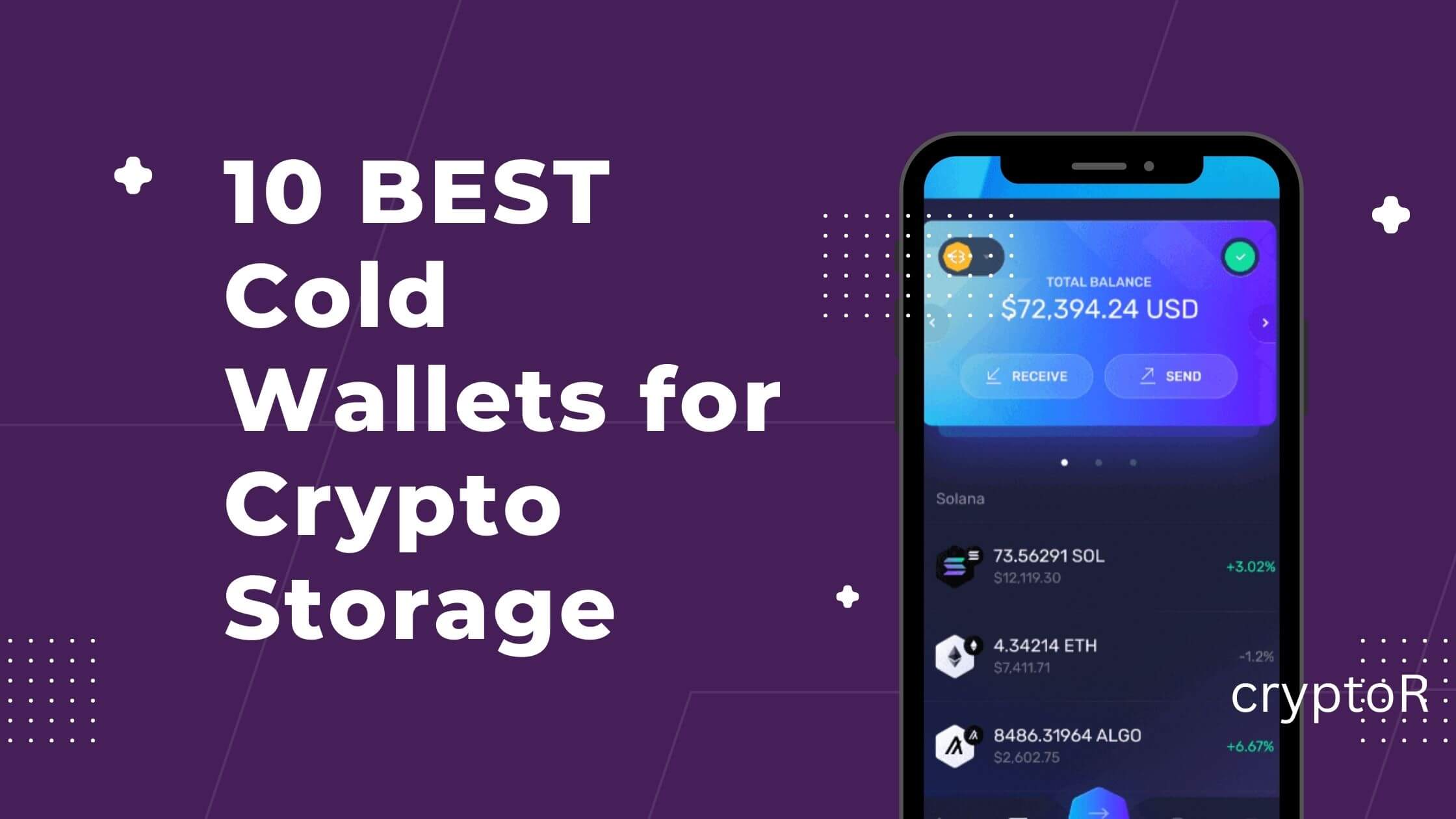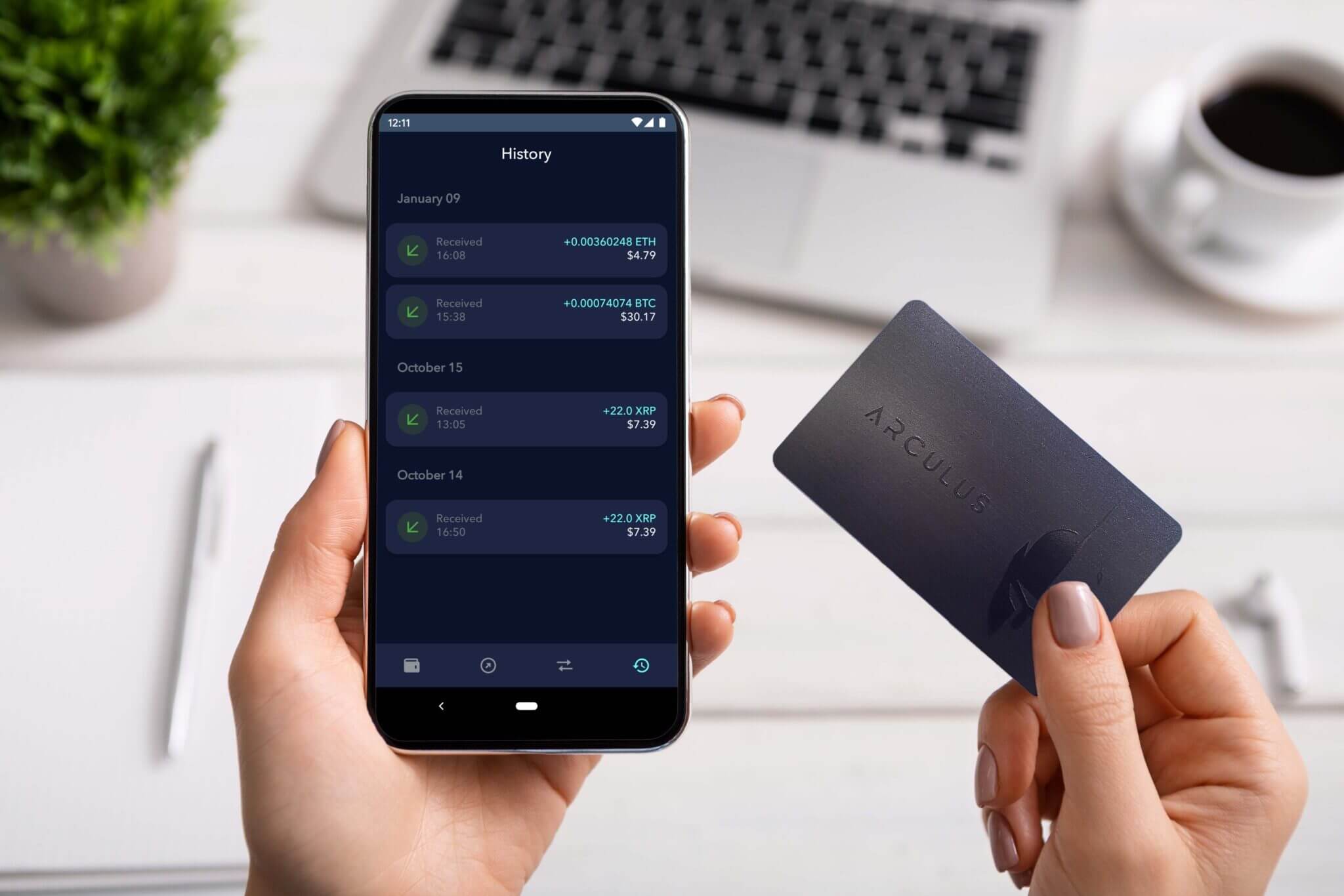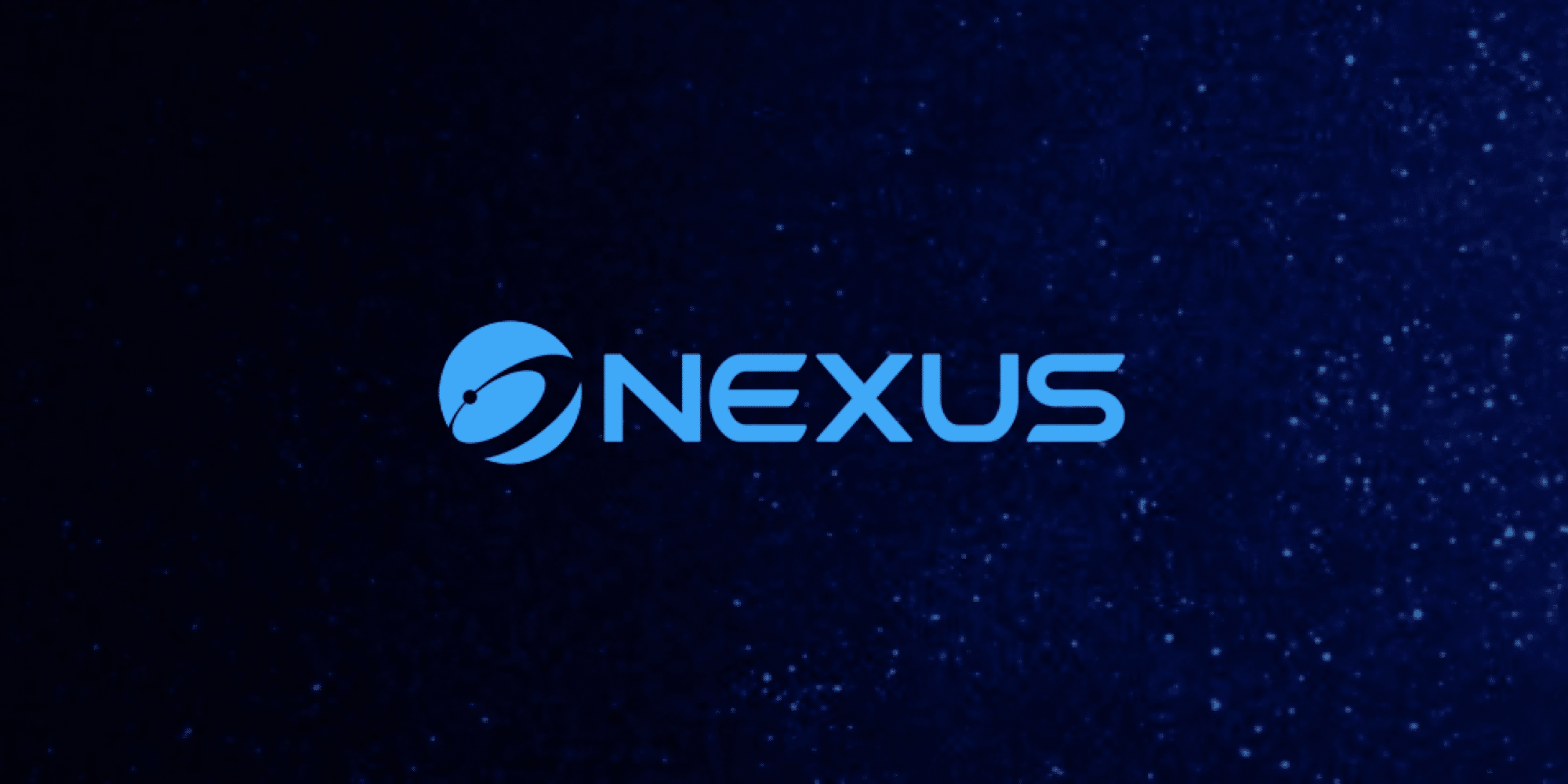Your cryptocurrency is stored in a crypto cold wallets, which is a software or hardware program. Nevertheless, there is no tangible manifestation of cryptocurrency. Wallets are the only places where the cryptocurrency may technically be kept. Software of this kind is quick and secure, and it is also simple to use.
It might be challenging to choose among the many Crypto wallets available on the market. Here is a list of the best cold wallet apps and software, along with links to their websites and lists of their most popular features.
best cold storage wallet
1 . Ledger Nano X
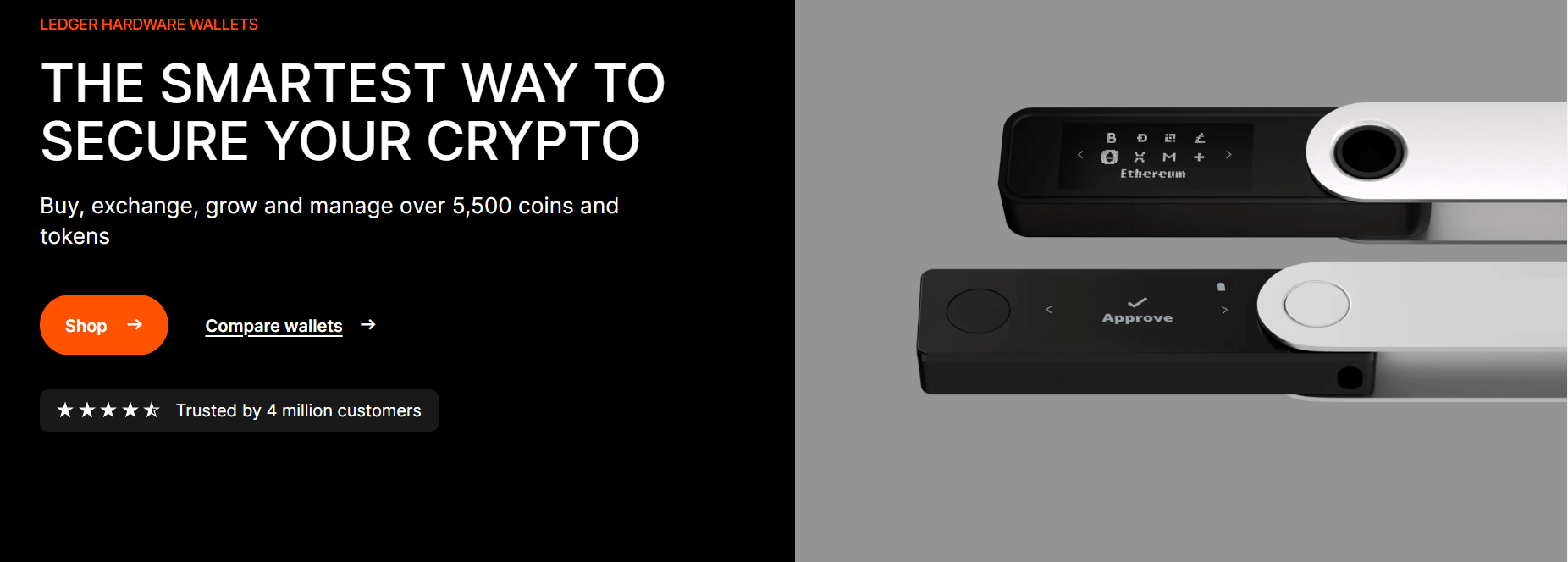
When used with the Ledger Live smartphone app, which enables you to see your balance instantly with or without the device, the Ledger Nano X performs at its best. By supporting Bluetooth, the Nano X surpasses the Nano S in performance. The Nano X is ideal for mobile payments because you no longer need a computer and a USB cable to confirm your transaction.
Since its establishment in 2014, The Ledger Company has advanced significantly. It still creates some of the top hardware wallets. Over 1,800 tokens are supported by the sleek, contemporary Nano S and Nano X hardware wallets. It’s not surprising that Ledger’s products have more than 2,000,000 users given that they have an OLED display and a robust app. One of the best hardware wallets is Ledger because of its compatibility with Metamask, one of the most widely used software wallets. The security of a Ledger can be combined with the functionality and simplicity of a Metamask wallet.
The only equipment you need to trade cryptocurrency like a pro is the Ledger Nano X and a good hot wallet. The Nano X costs $149, which might seem a bit steep, but it’s a small price to pay for the security that Ledger’s reputation ensures. For those on a tight budget who don’t mind using a hot wallet for mobile payments, the Ledger Nano S is a great choice and is currently available for purchase for $59 on Amazon.com.
Pros
• The user interface for Ledger Live is simple and practical.
•Application storage for three to twenty different ones
•Software that is open-source with the benefit of community and customer support
•Affordability of Bluetooth connectivity
Cons
•A potential cyberattack vector is Bluetooth integration (USB is still an option).
•The Bluetooth feature still needs work.
Limited storage for wallets.
Website link : Ledger Nano X
Trezor

Cryptocurrency proponents and a top-notch cyber security team collaborated to design and create the Trezor One by SatoshiLabs in the Czech Republic. Tresor is a word that means “vault” in Czech.
The first hardware wallet for cryptocurrencies using contemporary cryptography was created by the Trezor team, which is credited with this achievement. The wallet can be accessed using a PIN and an LED display for an intuitive user interface. When you confirm your purchase, the devices prompt you to use 2-factor authentication, adding a layer of security.
Over 500 alternative coins are available to hold and trade on the special hardware, which works with Windows, Mac, and Linux. The gadget needs your computer to be online and connected via USB, just like every other hardware wallet.
Pros
•A user interface for the web that includes built-in exchanges.
A large number of cryptocurrencies are supported.
•Software that is available for free and benefits from community and customer support.
Cons
• More expensive than comparable items
Miniature touchscreen for typing
For a new user, it can be confusing.
Website link : trezor
SafePal S1

Looking for a convenient way to track and manage your cryptocurrency on the go? The comprehensive SafePal S1 wallet should be taken into account. Your SafePal wallet is the size of a credit card, making it simple to bring it wherever you go.
You don’t need to risk your coins by using Bluetooth or public Wi-Fi to connect to the SafePal app to transfer your coins and tokens. Instead, use a local QR connection.
Best of all, SafePal allows you to store all of your investments in a single wallet because it supports over 10,000 different cryptocurrency tokens and coins.
PROS
• Stops a malware attack, a self-destruct mechanism.
•Very economical. Only $39.99 will get you it.
CONS
Currently does not support several popular cryptocurrencies, including Litecoin, Monero, TRON, and EOS.
Website link : SafePal S1
ELLIPAL Titan
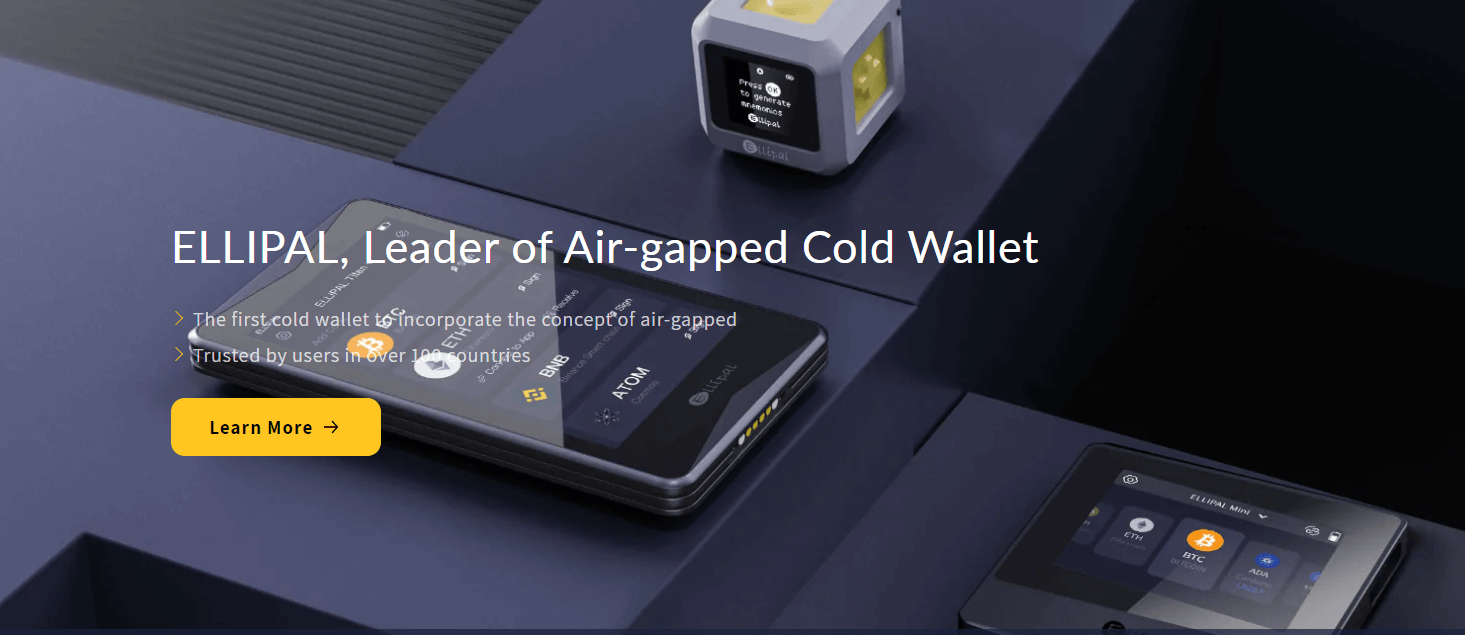
The Ellipal Titan is unafraid to refer to itself as the Titan. This hardware wallet resembles a Cybertruck phone more than it does a crypto wallet; it even has a touch screen for interacting with your digital assets. Ellipal wallets are air-gapped, so your priceless private key is safeguarded in a completely isolated setting that will never interact with the internet.
InToombine the security of a cold wallet with the features of a hot wallet, the Ellipal wallet pairs with an app. Additionally, the Ellipal has a unique feature that lets it handle both Ethereum and Binance Smart Chain tokens.
Pros
Over 10,000 unique coins can be kept in the Ellipal Titan. The device connects easily to Android and iOS phones with their respective apps, which is almost twice as many as what the Ledger Nano X and Trezor Model T can support. Additionally, in contrast to other cold wallets with their tiny screens, it has a 3.97 LCD touchscreen, which makes it simpler to use.
Cons
The touchscreen on the Ellipal Titan is similar to the very first touchscreen mobile devices that were made available. In addition to being less accurate, the screen is less responsive. Considering that I already have relatively small fingers, I kept pressing the wrong keys when I was entering my password. I can see how it would be very frustrating for people with larger fingers.
Website link : ELLIPAL Titan
D’CENT Biometric Wallet

This one has the only practically functional biometric security among the others, as the name suggests, making it the highest level of security. In addition to the USB cable connectivity support, it also has built-in Bluetooth connectivity for portability, but cryptocurrencies are only partially supported.
In addition to the central fingerprint sensor, the IoTrust hardware includes four physical buttons, a and 1.1-inch OLED display screen, and is made in Korea. These features help confirm transactions. The device has a micro USB port and a 585mAH battery as well.
Pros
It is user-friendly and supports a variety of cryptocurrencies.
enormous display
Easy to generate private keys, quick data recovery from lost or stolen data, and less energy consumption due to Bluetooth connectivity
Features secure firmware updates and a long-lasting 585 Ma battery
various wallets are supported
Using biometric authentications and a PIN, the wallet is protected.
Cons
unlike other crypto wallets, it only supports a smaller number of cryptocurrencies.
Website link : D’CENT Biometric
SecuX V20

SecuX is headquartered in Taiwan. The business now has a V20 hardware wallet despite providing enterprise blockchain security auditing and advisory services. It has a 2.8″ touchscreen and, in contrast to many others, is circular instead of requiring a connection to a computer or laptop, this device can connect to mobile phones, making it very portable. You add the cryptos for which you want to create addresses after establishing a web connection. Sending deposits to it does not require a connection to the Internet. QR codes that senders can use can be used to accomplish this.
Pros
Aluminum has been polished to a shine for the V20’s exterior. It also has great elasticity thanks to this, which improves the device’s appearance.
The touchscreen responds quickly and is steady. The power button on the SecuX V20 is the only button, and it’s thoughtfully constructed and even makes a soft, pleasant click.
Cons
•The SecuX V20 weighs a lot more than comparable products.
Website link : SecuX V20
SecuX W20
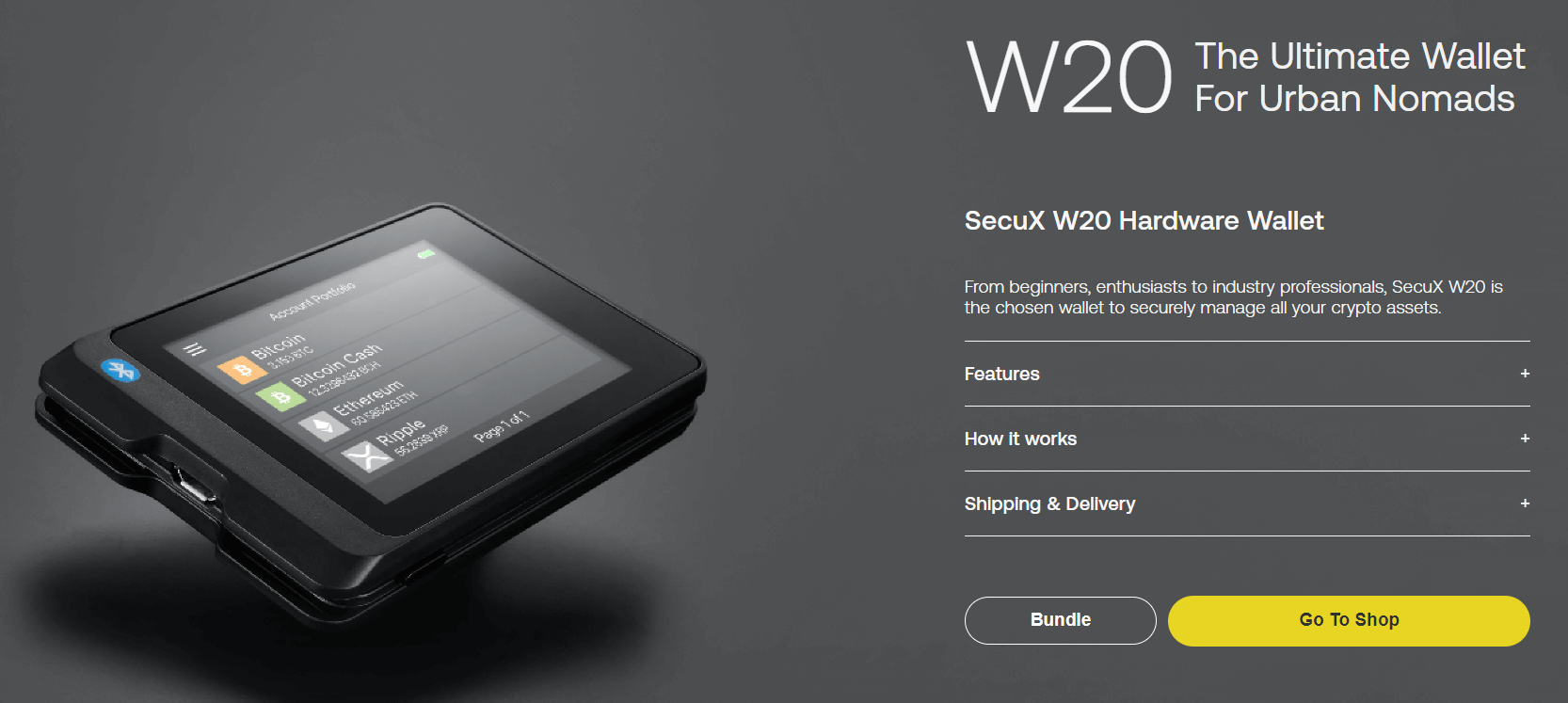
Hardware wallet SecuX Wallet was developed to aid owners of digital assets in securing their holdings offline. Built with the best security technology available, its SecuX V20 hardware wallet is designed to be safe. Users can engage with the content on the wallet’s 2.8 in2.8-inch screen by touching it. Users can easily browse through their portfolio transactions from the screen, making it both simple to use and secure.
Along with USB and Bluetooth connections, the crypto wallet has both. With the aid of this feature, any device that accepts this connection method can easily view the wallet. The most recent models, the V20 and W20, support USB Type C/Type Micro-B connections and are capable of quickly connecting to any computer via Bluetooth 5 technology. In ford oct, the security of the funds, these connections are protected by cutting-edge encryption standard technology.
Pros
•1 Big touchscreen
• A chip from Infineon Secure Element that is military-grade
• Compatible with Linux, Chrome OS, iOS, Android, Windows, and Mac OS
•Recovery compatibility with BIP32, 39, and 44 standards
Cons
– New to the market, relatively.
Website link : SecuX W20
Exodus Wallet
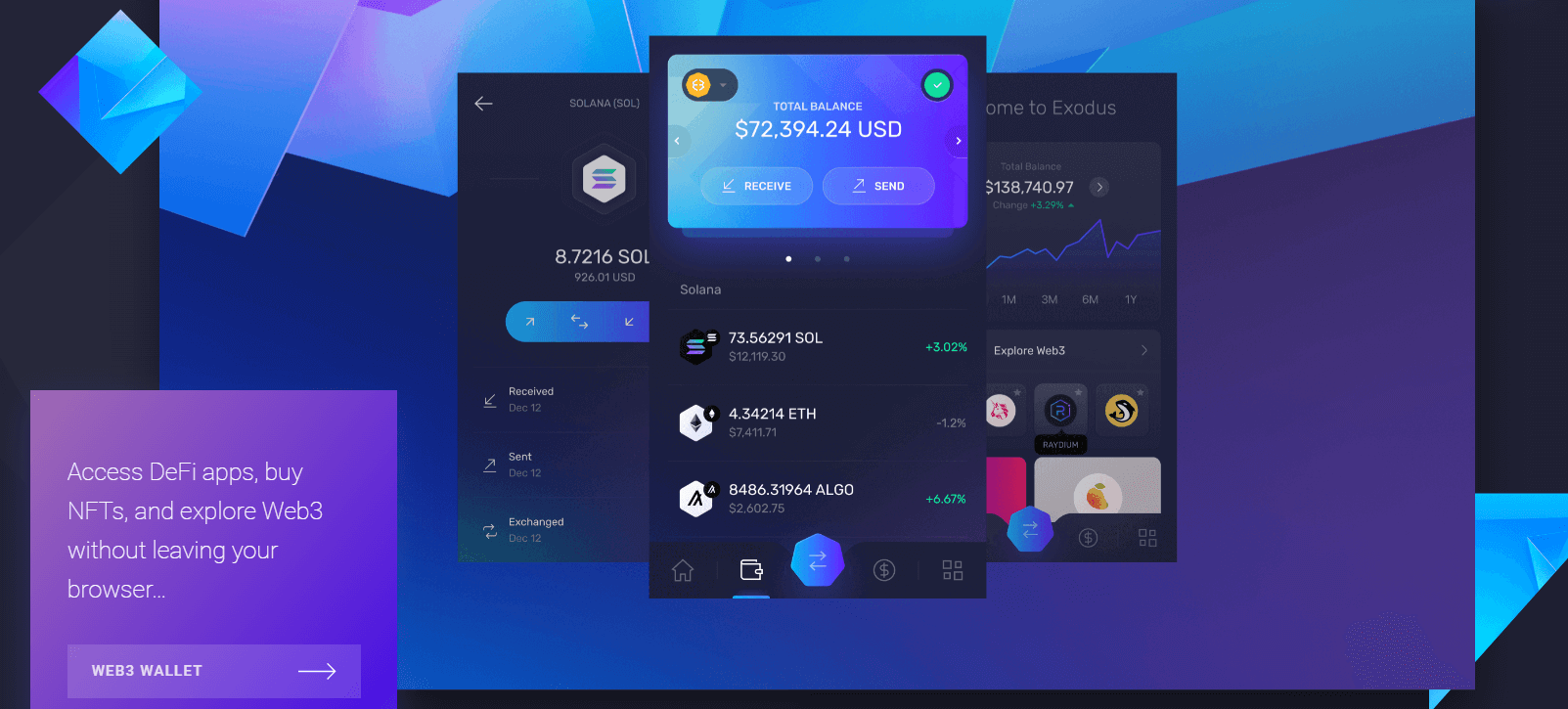
The desktop and mobile Exodus wallet have a very straightforward user interface. The ability to exchange between an increasing number of cryptocurrencies is one of Exodus’s most well-liked features. The number of cryptocurrencies that can currently be swapped on Exodus is over 150.
This crypto wallet is ideal for newcomers entering the cryptocurrency world because of how straightforward it is. Excellent support is another feature that makes it a must-have for newcomers entering what many would consider a complex market.
Although it is excellent for beginners, more experienced users might find that it is lacking in some features. Exodus wallet is a closed-source wallet first of all. As its code is not publicly available, it goes against the spirit of Bitcoin and the blockchain and may raise security issues. The Exodus team is relied upon by users to make sure the wallet’s security is impenetrable.
In addition to the option of automatically setting a fee to ensure the transaction is completed quickly, Exodus also offers the option to set custom fees to reduce costs.
Pros
• Transaction fees that are programmable
•Higher security level compared to the majority of hot wallets.
Cons
The user interface is simple.
Works exclusively with Bitcoin
•Only documentation and community-based support are provided formally.
Website link : Exodus
Mycelium
Only a mobile Bitcoin wallet, Mycelium is open-source. Only Bitcoin, Ethereum, and ERC-20 tokens are supported at this time by Mycelium. The Electrum wallet and Mycelium are somewhat similar. It has a more modern user interface than Electrum, is only available on mobile devices, and has an integrated exchange, among other differences.
One of the first wallets in the space, like Electrum, is Mycelium. In addition, just like Electrum, you can set your transaction fees, allowing you to decide how long you want to wait for a transaction to complete.
In addition, Mycelium has a few other intriguing features, like hardware wallet support, which enables users to store their Bitcoin on an offline storage device while still using the Mycelium user interface to view their holdings.
Pros
• Transaction fees that are programmable
Ability to utilize hardware wallets
Open source software
Cons
Mobile-only
it can be confusing for someone just beginning.
Website link : Mycelium
Nano Wallet

More than 4 million users worldwide rely on and enjoy Atomic Wallet, which is free. It may not provide the same level of security as a Ledger or Trezor cold wallet, but it’s still a good option for investors who don’t like having to use a physical device to access their money.
Software-based Atomic Wallet can be used on a variety of operating systems, including Windows, Android, and iOS. Due to the wallet’s decentralized nature and lack of custody, owners of the assets have total control over them. Total ownership of funds is a big plus, especially with so many platforms currently suspending withdrawals.
Pros
Free
Decentralized
built-in communication
Easy-to-use
Cashback
Cons
Cheaper exchange rates, but are less secure than a hardware wallet.
Website link : Nano Wallet
Using Hardware Wallets for Cryptocurrency
Most use a protected microcontroller with a separate chip for the device’s private key storage from the chip that connects to the Internet.
They are isolated from Internet-connected devices like smartphones and PCs, which reduces the likelihood of theft by hacking, and they use standard EAL5+ chip technologies, which are secure against penetration attacks. This also enables signing and verifying transactions manually and physically while they are offline. Physical buttons or touch screens enable entering the PIN while the screen display lets a user verify that the address is precise as desired. This prevents phishing, hijacking, and other hacking incidents that could result in changing the wallet address when copy-pasting.
They are highly advised for those who hold significant amounts of cryptocurrency, Bitcoin, and other digital assets. The majority of them have additional security measures like lock PIN, two-factor authentication, biometric security, and other security procedures. They are all equipped with multiple-word recovery seeds that you must enter when configuring the device. If the device is stolen, tampered with, or has problems, you can retrieve your cryptocurrencies using this.
Cryptocurrency Wallets: Hardware vs. Software
The private key that gives you access to your cryptographic assets on the blockchain is stored in hardware and software wallets, respectively. For offline cryptocurrency storage, use hardware wallets, which are tangible objects. In the world of hardware wallets, well-known brands include the SafePal S1, Trezor Model T, and Ledger Nano X.
Downloadable programs for your computer or mobile device are called software wallets. Despite typically being online, software wallets function like hardware wallets. Your private key is more likely to leak if your wallet is hot, or connected to the internet.
The most secure method of keeping cryptocurrency on hand is hardware wallets. When investing a sizable sum of money and not intending to trade it frequently, this option is the best. Typically, software wallets are used for smaller sums of money intended for daily use.
Bitcoin Wallets: Different Styles
Hot wallets: These wallets make use of keys that were generated or are kept on equipment that can connect to the internet. Even though they are more useful than cold wallets, hot wallets are frequently viewed as less secure. For large sums of money, these wallets shouldn’t be used.
Cold (Hardware) wallets: These can be any method of permanently offline private key storage, such as the Ledger Nano X or a piece of scrap paper. Large sums of money not intended for ongoing use are protected to the highest level possible through this.
Exchange wallets: The majority of cryptocurrency exchanges are more than willing to store your cryptocurrency assets on your behalf, though this is not advised. Your assets will typically be stored in a cold storage wallet by cryptocurrency exchanges. While this is useful for small sums of money and people who haven’t yet found a new wallet, it requires giving up control of your assets to a central organization that might be malicious. The best practice is to transfer your assets as quickly as you can from your preferred exchange to either your hot or cold wallet.
Custodial wallets: Institutions with ludicrously sizable holdings sometimes hire a third party to manage their assets on their behalf to avoid the hassle of doing it themselves. A reputable third party manages and insures custody wallets. Institutions can feel secure knowing that they are covered in the event of a failure in this manner, and top-tier security professionals can benefit financially from their expertise.
Which crypto cold storage option is the safest?
The strongest security features and track record of any reviewed hardware wallet led us to select Trezor as the best option for security. Identifiers for cold storage of cryptocurrency include Trezor and Ledger. The company’s Model T is a hardware wallet from the second generation they’ve produced.
FAQ
Which crypto wallet is ideal for all coins?
Cashbook by Coinbase.
Metamask.
ZenGo.
Exodus.
Recognize Wallet.
Ample Wallet
Trevor Wallet.
Blockchain wallet BitGo.
Which crypto hardware wallet has the highest level of security?
The safest and most durable method of offline cryptocurrency asset security is using a Trezor hardware wallet. Your digital asset information is never made available to the public via a Trezor wallet in a public, unsecured network.
Cold wallets or cryptocurrency—which is preferable?
For crypto wallets, there are two storage options: “hot” storage and “cold” storage, depending on preference. Cold storage is stored offline, frequently through a physical device like a thumb drive, whereas hot storage is an app or platform that is connected to the internet.
What is the safest cold wallet?
Overall Best: Ledger Nano X
Second-generation Ledger cold wallets include the Nano X. The best cryptocurrency cold wallet is a physical one, and for good reason. Since mobile users can access their wallets on their phones, you can manage, exchange, and purchase your cryptocurrency while you’re on the go.
Does any cryptocurrency support a universal wallet?
You can use all of the Defi services from under one roof with the help of the non-custodial wallet Defi WDefit by Crypto.com. You can easily manage over 100 coins, including BTC, ATOM, DOT, LTC, CRO, ETH, and other ERC20 tokens, and you can have total control over your keys and cryptos.
what is cold wallet?
Your cryptocurrency is stored in a crypto wallet, which is a software or hardware program. Nevertheless, there is no tangible manifestation of cryptocurrency. Wallets are the only places where the cryptocurrency may technically be kept. Software of this kind is quick and secure, and it is also simple to use

